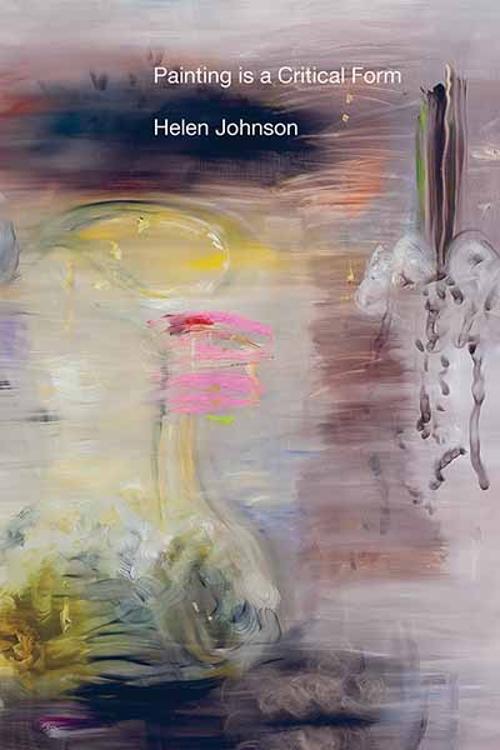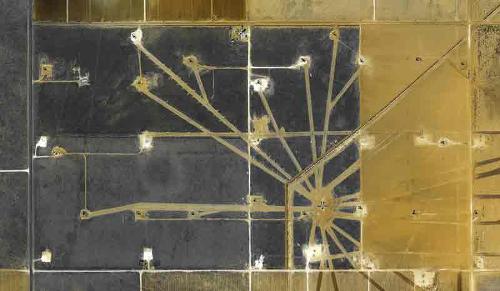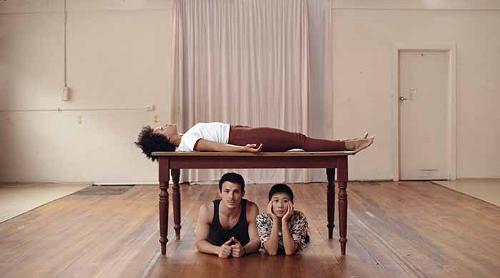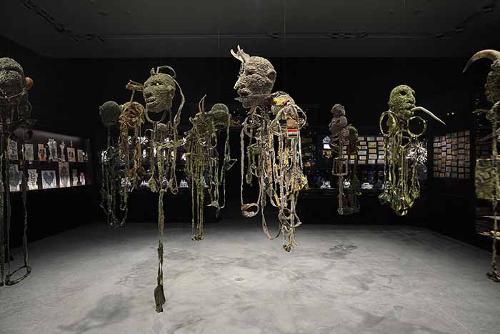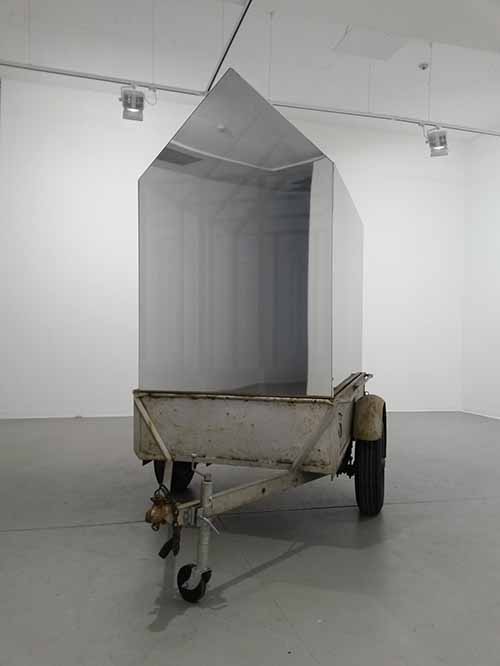
Sex, drugs and dance music: take a hit of each and ask yourself, are you an insider or an outsider? Don't worry about the answer, just let yourself go. It’s going to bring us closer together.
Matt Huppatz’s first major solo exhibition Work! incorporates installation, sculpture, assemblage and photo media. Huppatz explores how identities are formed, how we connect with others and our desire to communicate - his work is "about making love“. He draws on the negotiation of public and private life, how we present ourselves and how we appear to others. The exhibition revolves around masculinity, queer identity and party culture, revealing the hidden codes and languages of these communities.
The gallery is divided into two spaces: the first is white and well-lit; the second, dim and dark. Located in the first space, Go West is an old trailer that carries a house-like structure, whose surface is reflective yet translucent. 'Go West’, originally sung by the Village People, was later covered by another homophile defining band, the Pet Shop Boys. The song calls on marginalised queers living in outer nowhere to migrate and find the Promised Land. Music often acts as an escape from an isolated environment, allowing a lonely adolescent to dream of a more vibrant and forgiving future. Throughout Huppatz’s work, the notion of simultaneously being inside and outside an identity is explored and seems to consider commonalities in our internal and external desires. When observing the surface of the house from certain angles, the reflected psychedelic colours and imagery from the digital print works Hibiscus and X Factor hanging on the wall, hint that the Promised Land is perhaps not so far away.
The second room is home to a series of minimalistic sculptures made of industrial materials like metal, wood and acrylic. Faint spotlights shine off their surfaces, highlighting that each work contains tube-like passages connected by holes at different levels. These slick and polished works have a slightly seedy feel in the dim lighting, bringing to mind an underground nightclub. In one way, club life could be seen as superficial, an individual search for gratification. But the shared euphoria that comes from the glory of sex, chemicals and music enhances our ability to connect with other human beings. It’s no surprise that club culture has a strong connection to queer culture. These dark holes away from the public eye create a space where anyone has the freedom to be anything. Of course, no single hole fits everyone in society. One person’s euphoric dance floor is another person’s anxiety-riddled stage. But why should there be one hole that fits all? Maybe it’s better that we keep these things hidden in the dark; they might lose their magic by the light of day.



